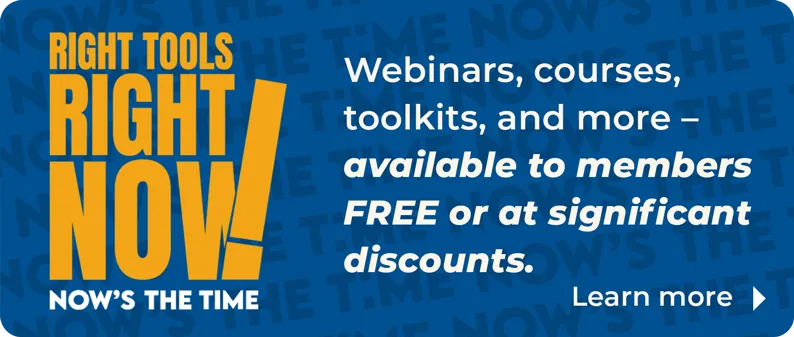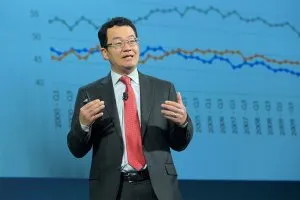
Letty Oliver’s office at the Miami Association of REALTORS® includes a 45-inch screen. The scenes that unfold across that screen inject bursts of joy into her day.
"Cameras show me what’s going on in our conference center upstairs, and every time members step into that conference center for educational courses, it’s a satisfaction that I’m fulfilling and doing what I love,” says Oliver, chief of innovative education. “It’s a reminder that I’m giving back to the community.”
Oliver likens her position to that of a guidance counselor for her mega-size board and its members. Her community encompasses 60,000 members for whom she strategically designs educational courses that convey the knowledge and tools they need to be successful at their jobs.
The 1,100 associations affiliated with the National Association of REALTORS® offer a vast amount of education for members. Education directors like Oliver from associations of all sizes share their insights and wisdom—how they develop course offerings, handle staffing and overcome any challenges that stand in their way.
Customize Your Courses
We’ve all heard that everything is bigger in Texas, so how does Texas REALTORS® plan its statewide course offerings? Communication is the key, says Jon Houser, RCE, association and member development director.
He partners with local associations across the Lone Star State to offer designation and certification courses—a fact that may explain why Texas has more designation holders than any other REALTOR® association. Texas REALTORS® members can attain the Texas Accredited Commercial Specialist Certification and at least five others.
“With each of these credentials, we work with state committees to define required and elective curriculum that aligns with the committee goals for education on these topics,” Houser says. “Partnering with local associations is critical for administering these courses. Texas is too big for us to serve all members by ourselves. Additionally, the local associations know the needs of their respective members and can ensure the education they offer is relevant and timely to their local real estate markets.”
For Texas REALTORS®’ annual conferences, Houser also develops what he describes as “unique educational opportunities related to current real estate trends.” These classes, which attendees likely wouldn’t find anywhere else, don’t provide continuing education credits but address such timely topics as “Where Have All the Houses Gone?”
Similarly, in Coeur d’Alene, Idaho, there’s a class called “Surf and Turf.” “It discusses the balance between enjoying our lakes and rivers [and] preserving clean water and healthy riparian areas, managing wastewater and maintaining quality drinking water,” says Jennifer Richards, association executive for Coeur d’Alene Regional REALTORS®.
Surf and Turf classes sell out every time they’re offered, Richards says, because they speak directly to Coeur d’Alene’s natural attractions— its aquifer, lakes and rivers—that draw residents and visitors alike. When developing electives, she says it’s vital to consider what’s going on in the region in addition to the industry as a whole. Once those timely topics have been identified, outreach begins.
“We look into where we can find those courses—maybe from a title company, from an inspector, or maybe it’s something we can satisfy with a certification or designation course,” Richards says.
Back in Miami, Oliver says it’s primarily feedback from her association’s 60,000 members that shapes course offerings.
“We have open discussions at our board meetings where our leaders talk about what’s going on in our area, since we cover three different markets,” Oliver explains. “Condos are a hot topic in Miami-Dade right now, for example.”
Feedback is also gathered from individual members in a very grassroots way: Oliver often stands outside classes as members leave, and she asks if they enjoyed the class or if they’d change anything about it.
“I grab that feedback and give it right back to the instructors,” Oliver says.
Right-Size Your Staffing
The mechanics of planning and executing educational classes can look quite different from association to association. Oliver, for example, has six educational staffers who ensure classes run smoothly and are available to answer Miami’s membership questions via phone.
At a small board like Sutter-Yuba Association of REALTORS® in California, Crystal Castle, RCE, serves as CEO and has one additional staff person. That means she depends heavily on her education committee.
“They’re almost an extension of staff, so it’s important for me to empower them,” Castle says. “As a committee, they determine topics and instructors.”
Each committee member offers hands-on help for one lunch-and-learn event annually: booking an instructor; lining up a sponsor, which partly underwrites lunch costs; being present at the course, welcoming attendees and introducing sponsors and instructors; and assisting with setup and cleanup.
“It’s the one committee where it’s not hard to get people,” Castle says, “and as a perk, all committee members may attend all lunch-and-learns at no cost.”
While Sutter-Yuba’s education committee includes 10 volunteer members, Texas’ statewide association boasts a professional development committee that ranges from 100 to 200 volunteer members, plus five staff members dedicated to education. Houser says technology allows the association to increase efficiency.
“We work diligently to utilize technology for streamlining our processes,” Houser says. “We originally built our own system [because] there wasn’t a product available to support our needs. Just recently, we transitioned to a new association management system, and they created a platform that automates much of our education workflow.”
Since Houser launched his career at Texas REALTORS® in December 2005, the association has increased the number of attendees and classes offered in partnership with local associations tenfold, and it needed only one additional staff person over the 20-year period.
At Tucson Association of REALTORS® in Arizona, a membership staff of four works under the leadership of Lisa A. Nutt, school administrator and director of professional development and member services.
“We’ve cross-trained our member services team to provide support on the professional development and education front,” Nutt explains. “Their role is administrative, assisting with class rosters, registration and enrollment, payments and issuance of certificates,” which brings efficiency.
When Nutt began her educational role last year, she immediately responded to one piece of consistent feedback: Members wished instructors were locally based.
“I agreed with that sentiment and joined the association’s efforts in becoming one of the first state-approved instructors for the association and helping recruit other instructors,” Nutt explains. “And that really started making a difference to the membership, because now they’re seeing colleagues up on the stage, relating information about what is happening in the community and making the connections to our real estate market. I’m still a practicing [real estate licensee], and so I have arguably the credibility and integrity with participants in any educational opportunity we afford.”
My focus is on making sure we’re bringing in education that our members want. We send out surveys; our committee asks or reports back from networking. We’re paying attention to what they tell us.”
–Jennifer Richards, Coeur D'Alene Regional REALTORS®








